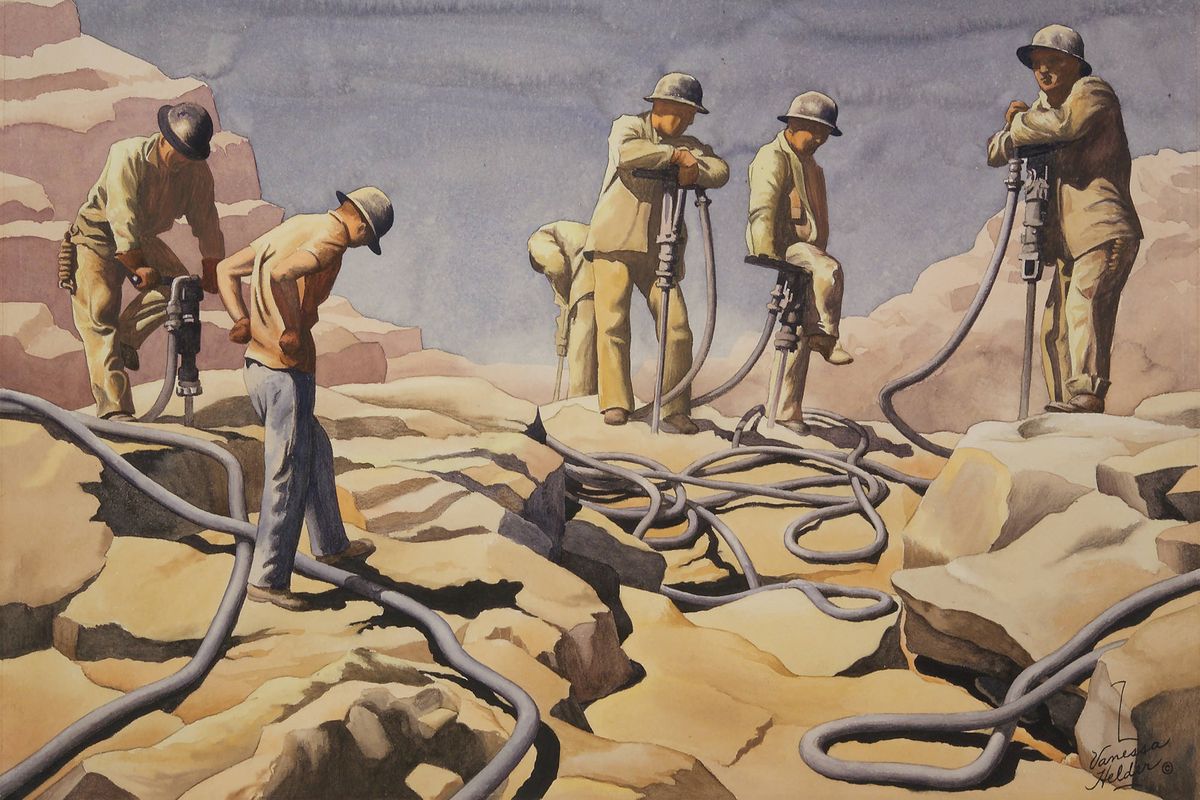MAC observes region’s centennial by sharing ‘100 Stories’
MAC observes region’s centennial by sharing ‘100 Stories’

The Northwest Museum of Arts and Culture is opening “100 Stories – A Centennial Exhibition” today.
The exhibit “is really an opportunity to look back at the 98 years of our history and to celebrate the region,” said MAC executive director Forrest Rodgers.
“It’s also a chance for us to begin looking ahead to our centennial in 2016, our 100th birthday, and to look forward to the next 100 years.”
The exhibit pulls together items from the museum’s collection to tell stories about the history, tribal cultures and art of the region.
Some items are iconic, some are frivolous, some are fun. “They’re not all weighty, huge subjects, but it all weaves together,” said Marsha Rooney, the museum’s senior curator for history.
And the stories are told in a variety of ways – with objects, art, video and even a smartphone app, Rodgers said.
It was difficult to limit the exhibit to just 100 stories, Rooney said.
“They’re sound bites, but so much can be made of each one of them,” she said. “Plus, the objects are fabulous to look at.”
The exhibit is broken up into sections to make it easier to digest, Rooney said.
One is “Big Moments,” with 10 stories that help link this region to the larger American story. Other sections include “Natural Elements,” “Family Time” and “Storytelling.”
Items in the exhibit range from minerals extracted from the Silver Valley and a Geiger counter used by the Dawn Mining Co. on the Spokane Indian Reservations to a velvet and gold-threaded blanket made for a racehorse named Spokane that won the Kentucky Derby in 1889. Spokane residents were so excited by the win that they raised $5,000 to make it.
There’s also a stained-glass window of Miss Spokane and neon signs – one from the 1930s from the regional variety store chain Fonk’s, the other from the Magic Mushroom, a Spokane music store from the 1970s.
Story 66 focuses on the work of Pullman artist Patrick Siler, a Washington State University art professor emeritus known for his ceramics and figurative works.
“It’s storytelling at its best,” Rooney said.
That story will be exhibited through Aug. 25, then something else will move into the gallery.
Rodgers said the exhibit will be augmented with special programs throughout its two years, including living history programs, arts and traditional crafts demonstrations, lectures and films. Those activities start today.
“This effort is really an opportunity to bring the history and culture and art of the region to life,” Rodgers said. “To give people the opportunity to experience what it might have been like here a hundred years ago or 10,000 years ago, and how we are the same and different as people.”